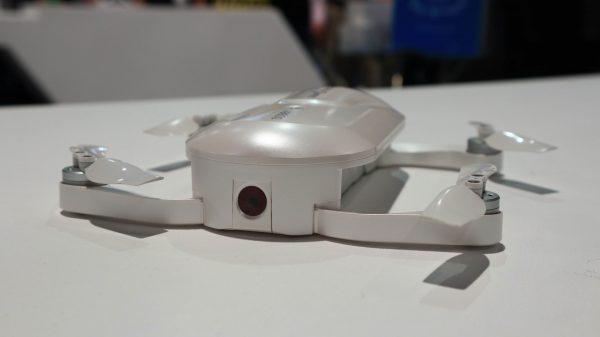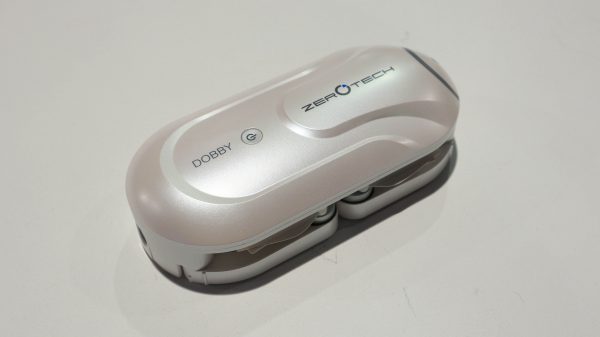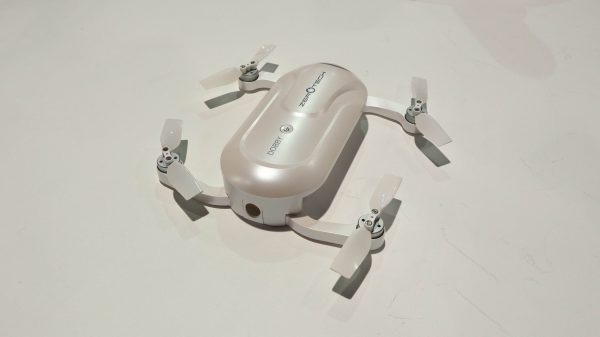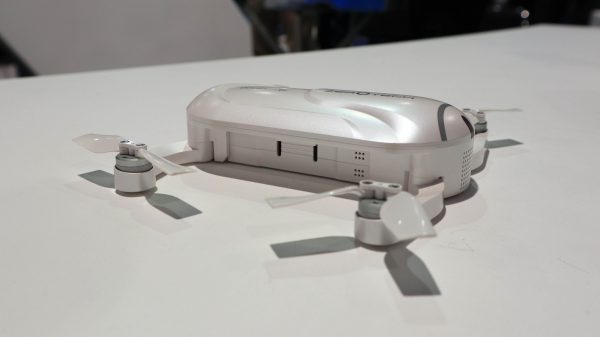First came app control, then automated flight modes quickly followed. Now the next big thing in the drone space seems to be selfie drones. These are tiny, largely autonomous flight platforms that do without manual physical controls and gimbal-mounted cameras in a bid to keep costs down and accessibility high.
The recent demise of Lily Robotics, after securing $35m US in pre-orders for their drone, could be seen as a cautionary tale for a young, hype-filled industry. Yet the sheer number of people interested in the product does show that there’s a market out there for a small, entry-level personal UAV that’s more of a turnkey selfie platform than piloted aerial vehicle.

Enter the Dobby, where the emphasis is squarely on getting up and flying rather than fine-tuning settings or calibrating cameras. Take-off is initiated via a dedicated smartphone app, by patting the drone or just chucking it into the air (probably best to double check you’ve switched it on with that last one). It features a follow mode and face recognition for selfie-friendly shooting, and captures photo and video via a 13MP / 1080p camera.
Inside the drone is a Qualcomm Snapdragon chip, which also comes with an integrated fast charging system. That means after flying for up to ten minutes, you’ll have to wait around half an hour while the 970mA battery recharges. That battery is removable though and there is a power station accessory that charges multiple batteries, so you’ll be able to swap them out and stay airborne for longer.

The whole unit weighs 199g (seven ounces) and the propellors fold in flush to the drone’s body for transport. It’s a very compact package and (provided you’re going to places that will let you use it) could make a great travel companion to have in your bag ‘just in case.’ With the small size and limited control options there will be compromises in terms of the shots you’re able to get – but this could be a case of the best drone being the one you have with you.
It might not be top of the list of feature requirements when buying a new drone, but the Dobby has an unexpected trick up its sleeve. When flown alongside up to 35 other Dobbys, this small UAV can sense the location of its companion drones and fly in formation. The company describe this as ‘dancing’ which might be a bit of a stretch, but it’s quite extraordinary that it’s now possible to implement machine vision so cheaply it can be included as a feature in entry-level drones. Maybe in the future we could see some interesting bullet time rigs based on this technology.

In truth, this is really a sub-entry level machine. Something like DJI’s Mavic Pro is probably much more what you’re after if you’re thinking about using a drone professionally. The Dobby on the other hand might be more suitable if drone shots are a ‘nice to have’ rather than ‘mission critical.’ And it would certainly be small enough to throw in your camera bag just in case the opportunity to use it arose.
It’s worth noting that our colleagues at Photo Gear News have only seen the Dobby flying inside in controlled conditions, and ZeroTech will have to go some to make their offering as accessible and powerful as the latest and greatest from DJI. Safety is obviously paramount with any flying vehicle, and if users begin posting videos of their new gadget falling from the sky (as happened with the GoPro Karma) then it could be game over for the Dobby.
But safety concerns aside, the Dobby is aiming to be a fun toy and a selfie shooter and it’s a lot cheaper than even the Mavic Pro. At $399 US the Dobby isn’t quite an impulse buy, but if you’re interested in trying out a drone for the first time it could be worth a shot. Availability might be more of an issue in some countries. You can order it at B+H in the US, but as yet there’s no distributor in the UK: eBay is probably your best bet if you’re keen to get your hands on one.






